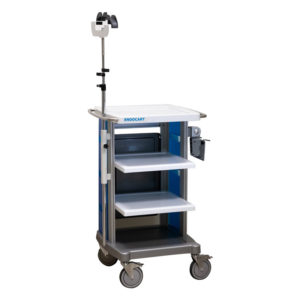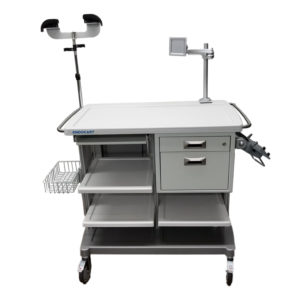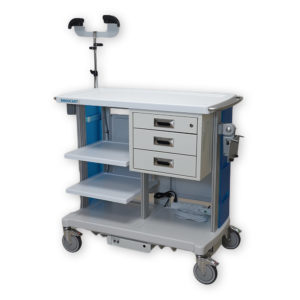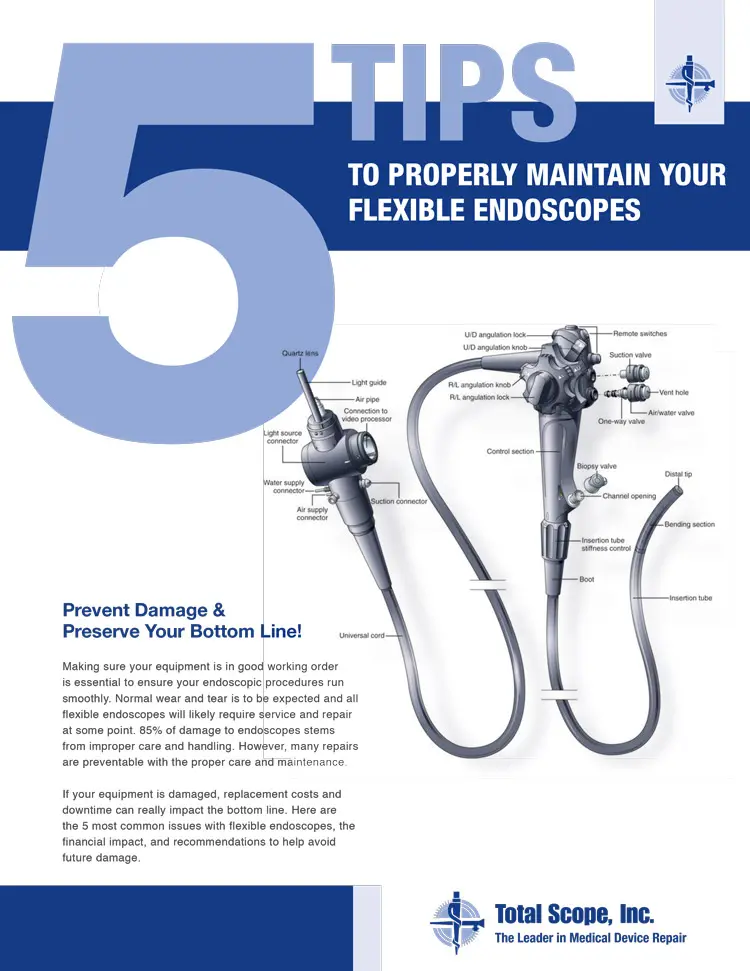Endoscopy carts are an important piece of equipment for doctors and nurses in a medical setting. They help keep equipment organized and can be moved to where they are needed most. While these carts help nurses regularly, they also come with some potential risks or problems.
Risks Nurses Run into Using Endoscopy Carts
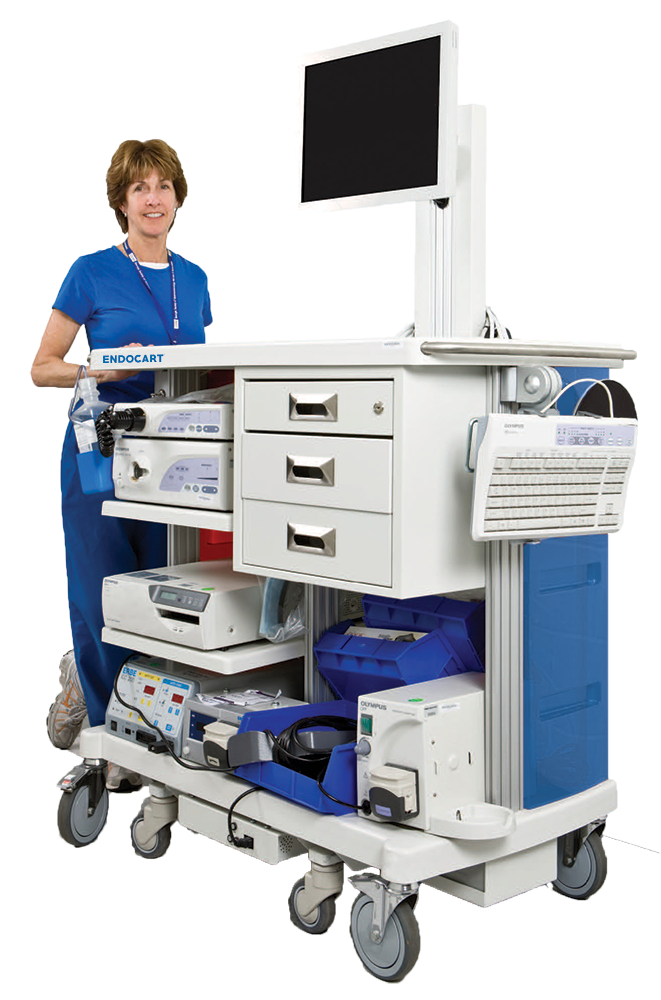
- Too Bulky: Occasionally a nurse will have an endoscopy cart that is bulky and hard to maneuver. Hallways are commonly crowded with other medical personnel or equipment, so when it comes to moving an endoscopy cart it can become problematic. As nurses travel from location to location, doorways are sometimes too narrow which causes an issue for them as they struggle to re-arrange equipment on the cart just to get through.
- Too Tall: Sometimes the problem is that the cart is too high for the nurse. If they can’t see where they are going, they run the risk of injuring themselves or others, as well as damaging the cart simply by running into other objects.
- Too Heavy: Endoscopy carts tend to be somewhat heavy and often difficult to maneuver. Standard endoscopy carts usually do not have a motorized feature; therefore, they have to manually move them. Although they may not be heavy for some, others may find it difficult to push from location to location. Many hospitals have ramps within their departments which make moving them even more problematic. Nurses often report that they are a safety hazard in the sense that they may fall backward and injure themselves; for instance, when they are pushing the cart up a ramp. Endoscopy departments frequently push the concept of these carts being a safety hazard so they can purchase a newer cart, perhaps with a motorized feature.
- Poor Ergonomics: When nurses are repeatedly having to push a cart (that also may be too heavy or too tall), it can contribute to muscle strain, muscle imbalances, and fatigue. This can contribute to a number of injuries, especially back and neck injuries. Considering 38% of nurses have missed work due to back injury,¹ it’s important to find an ergonomically designed cart.
- Not Enough Space: In some cases, an endoscopy tower doesn’t have proper storage for tools and accessories, so it becomes inefficient and unnecessary. Why push it around if it’s not even helping?
- Rusted: Older carts eventually begin to rust. When it comes time for JCAHO to do an inspection, carts with rust will fail, resulting in the need for a new cart.
The Solution: Custom Endoscopy Carts
Endoscopy carts are meant to provide efficiency and safety, but in some cases, they actually are a liability. Investing in a custom cart ensures you get the right size and type cart for your setting.
- Standard Endocart®
- Deluxe Endocart®
- Motorized Endocart®
Total Scope’s line of Endocarts® includes a standard tower, which has a compact design that is perfect for limited space and a minimum need for all of the accessories, like a respiratory or ENT clinic. The Deluxe Endocart® has plenty of space for accessories and is equipped with a dual scope hanger, side keyboard tray, three drawers, and a power strip.
Our motorized endoscopy cart has non-marking, oversized wheels, which allows for clean floors and walls, along with an extremely smooth driving experience, which reduces back pain/stress for the staff. This cart literally glides down the hall, effortlessly turns sharp corners, and stops on command. As you can imagine, this is an HR favorite. It reduces potential liabilities associated with staff-members manually pushing heavy fully-stocked carts!
Our line of Endocarts® was built by the GI nurses for the GI nurses, so they are designed specifically to help solve the problems nurses commonly run into with endoscopy carts. Each endoscopy cart goes through a 27-point inspection to ensure the highest quality. Plus, when you work with Total Scope, you’re dealing directly with the manufacturer, which means we can provide repair services and replacement parts as needed.
Sources
- Owen, B.D. (2000) Preventing injuries using an ergonomic approach. AORN Journal, 72, 6: 1031-1036.
 FREE SHIPPING Anywhere in the Country for Repairs
FREE SHIPPING Anywhere in the Country for Repairs